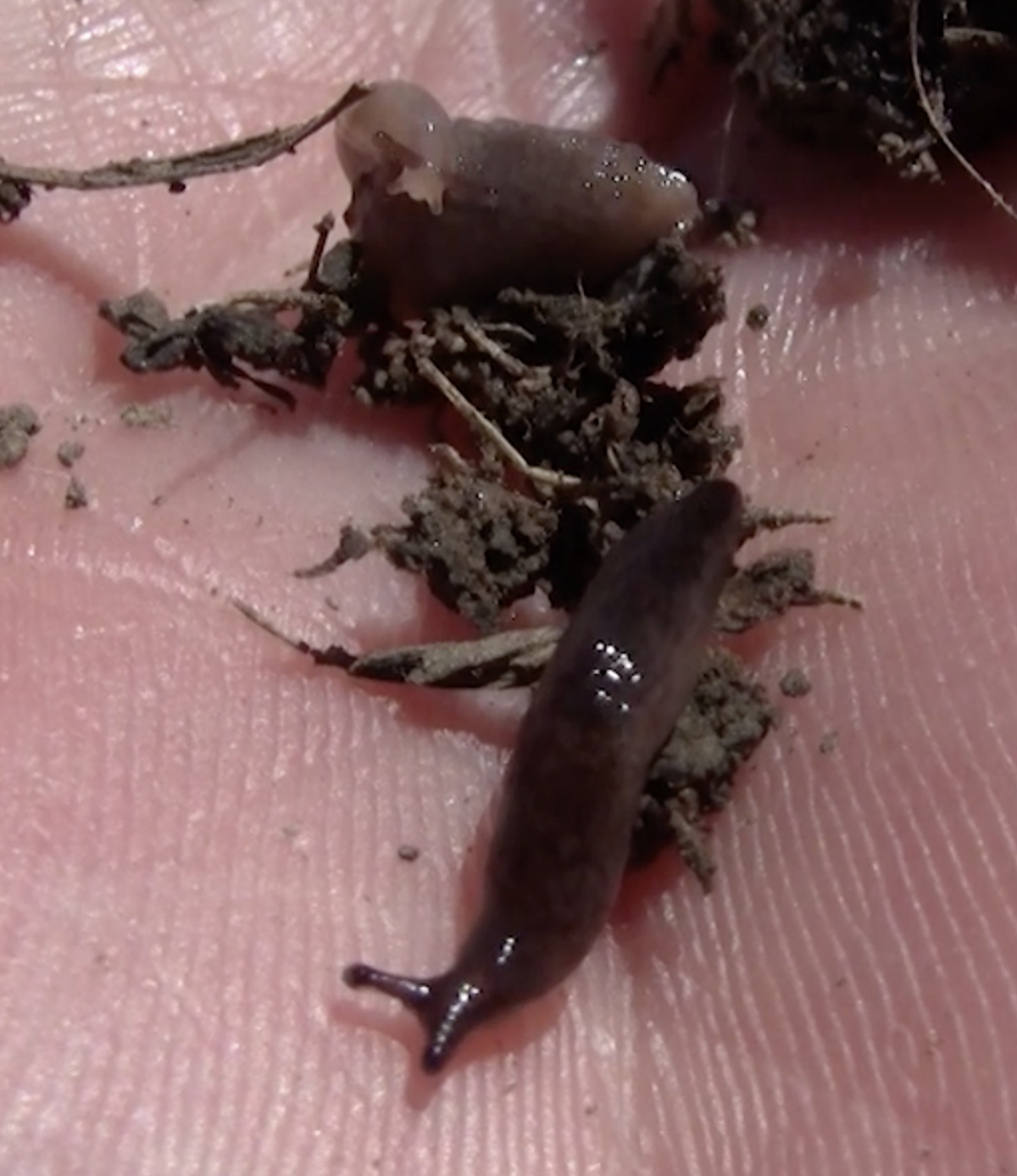
Bryan Jensen, Department of Entomology, Division of Extension
The cool, wet weather has me thinking ……… of slugs. Although some of our best control practices including tillage, crop rotation, not using insecticide seed treatments and planting date have already been made (or in the case of planting date have been made for us), do be on the lookout for increased slug activity.
Slugs have a “rasp-like” mouthpart and damage seedling plants by scraping off leaf tissue. Because of late planting dates and cool growing conditions seedlings may have a difficult time outgrowing slug damage.
Seedling soybeans are quite susceptible to slug feeding because the growing point is above ground at emergence, therefore stand density can be reduced. Corn can withstand more seedling damage and the economic potential of slug damage is often overestimated. However, make sure the seed furrow is closed or corn can also have significant stand reduction.
What can be done in-season to control slugs? No surprise here, but control early season weed growth to reduce habitat. Do not use foliar applied insecticides unless necessary. Often, using insecticides is a knee jerk reaction because we have come to expect our broad-spectrum insecticides will control all “critters”. No so. Slugs are mollusks and insecticides will not control them. Instead these insecticides will kill beneficial insects that help reduce slug populations. Furthermore, use of the neonic seed treatments will not control slugs but will kill insects that feed on these slugs.
Slug baits can be effective but given tight profit margins they might not be an option for entire fields. Economic thresholds have not been developed for slugs. Before baits are considered, thoroughly read the label including all applicable footnotes! The metaldehyde-based baits are not labeled for use on soybeans in Wisconsin. This is not obvious because you must refer to a footnote which indicates approved states. The Sodium Ferric EDTA containing product (Iron Fist) comes with precautions as well. Although labeled for Wisconsin corn and soybean production it must be applied between the rows at the seedling and later stages of crop development. Do not expect slug baits to be a cure-all solution. High slug populations, rain and uneven granule distribution will reduce % control.
A final suggestion would be to make detailed field histories whiles scouting this spring. Use this information to make preventive management decisions next year.
